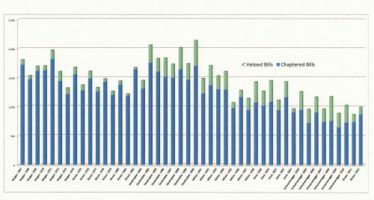Going green – more hype than reality
Katy Grimes: Going green is costly, and not as popular as the government would have you believe. Many voters agree, and now a new report confirms this.
A report released just this morning by auto analysts at J.D. Power Associates states that by 2020, the majority of new cars sold around the world will still run on gasoline, and not electricity, according to the report “Drive Green 2020: More Hope Than Reality.” In ten years, only 7.3% of passenger vehicles sold globally will be hybrids or plug-in cars of some kind, the study predicts.
A CNNMoney.com story reported this morning, “Percentages for the U.S. will be higher — about 14% of the total new car market — but the vast majority of those will be “conventional” non-plug-in hybrids like the Toyota Prius or Ford Fusion Hybrid, said Mike Omotoso, director of powertrain forecasting for J.D. Power.”
According to the report, it will be difficult to convince large numbers of consumers to switch from conventionally powered passenger vehicles to HEVs and BEVs. A consumer migration to alternative powertrain technologies will most likely require either one of the following scenarios, or some combination of these scenarios:
- A significant increase in the global price of petroleum-based fuels by 2020
- A substantial breakthrough in green technologies that would reduce costs and improve consumer confidence
- A coordinated government policy to encourage consumers to purchase these vehicles
In a press release by J.D. Power, John Humphrey, senior vice president of automotive operations at J.D. Power and Associates, said, “Based on our research of consumer attitudes toward these technologies—and barring significant changes to public policy, including tax incentives and higher fuel economy standards—we don’t anticipate a mass migration to green vehicles in the coming decade.”
What does this mean for aggressive, green governmental regulations? Humphrey said because of the lack of consistency in governmental regulations, global automakers are forced to hedge their options by seeking alliances and technology-sharing agreements. The heavy fixed costs associated with developing multiple powertrain options simultaneously are prohibitively expensive. When combined with the projected lower sales volumes of these products, collaboration between auto companies is almost a necessity to control costs and remain competitive.
Auto writer Phil LeBeau with CNBC correctly identified the exorbitant costs of purchasing the electric and hybrid vehicles, as the reason the cars are not selling more. “Even with a $7,500 federal tax credit and additional tax breaks from state governments, the person who buys the Volt will still have to take out a loan/pay $41,000 when they go in to get the car.”
LeBeau says, “The car will wind up costing far less in the long run after people do their taxes,” but I disagree. I’ve run the numbers on hybrids, and it turns out that even with the (exaggerated) mileage estimates advertised, because the purchase price is so high, a lower-priced regular fuel car that gets good mileage is still a better financial deal, during the life of the car. Which is exactly why the government is offering subsidies on the new electric cars, as well as subsidizing the industry.
This report is good news for supporters of Proposition 23. Even J.D. Power is not buying the green, enviro-hype.
Information about the report is available at JDPowers.com
OCT. 27, 2010
Related Articles
12,744 new laws signed by Brown
Oct. 2, 2012 Katy Grimes: Whenever someone tells me what a lousy governor Arnold Schwarzenegger was, I remind then that
Sacramento Passes Crash Tax
Katy Grimes: Defying its own push to increase the use of downtown restaurants, entertainment venues, as well as the K
Taxpayers fund govt. agency advertisements
Dec. 21, 2012 By Katy Grimes The state of California is pushing welfare and food stamps very hard. They constantly




